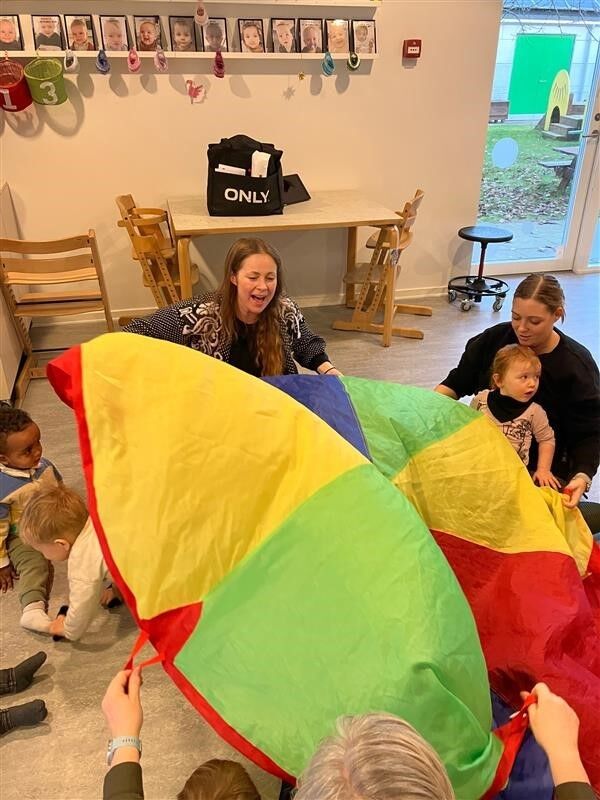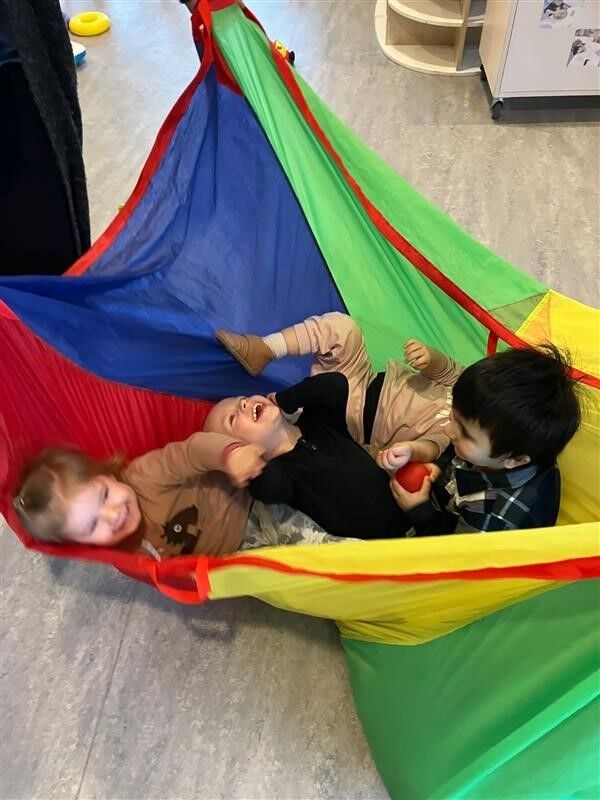KEYWORDS
REGION: North
MUNICIPALITY: Frederikshavn
PROCEDURE: 2022
DAILY OFFER: Børnehuset Hånbæk
Snow story: Børnehuset Hånbæk (2022)
At børnehuset Hånbæk there are many different nationalities, which means that many of our children have several languages to juggle. We also have Danish-speaking children with various pronunciation difficulties, which means that there is always a strong focus on language development. We know that rhythm is part of the foundation for language development and later the ability to read and write. We have therefore been curious about how we can use music and rhythms to support the children's language development.
A group of children from the nursery and a group of children from the kindergarten have participated in the program with Natasja, who is a musician.
In the beginning, when the children met Natasja, we experienced a group of children who were very curious about all the new songs and rhythmic games she brought and wanted to participate. This was quickly followed by a joy of recognition and it was clear that the children benefited from the repetition.
In the nursery, we have had the following experiences:
After the end of the program with Natasja, it is our experience that the children have become better at communicating and expressing what they want. If there is a particular song they would like to sing, several of them either gesture to the song or hum the song in question. They have become good at picking up the language melody of the songs and can tell what they want.
The children show great understanding of what we need to do when Natasja arrives. They all come and sit down and want to join in
It's a great idea to have both a beginning and an ending song so that the children know what's going to happen. We see several children's language development flourish. For example, a multilingual boy of 1.9 years old who has not yet expressed himself linguistically - he has started saying more words and counts 1 - 2 - 3 when we sing.
We would like to continue working with Play Art once a week in the future. We have applied to the "Børnekultur-puljen" for money to set up an outdoor learning environment with various instruments.
We remain curious to see how music and rhythms impact children's language and overall development.
In the kindergarten we have had the following experiences:
Throughout the program, we have experienced that the children have shown interest in participating with Natasja and have been good at learning all the songs and the order of the songs. Afterwards, we have often been able to hear the children walking around the room and singing the songs either alone or in their play with other children.
We can see that children who don't have much expressive language enjoy the songs and rhythmic games. They've learned the gestures and are good at it that way.
During a day with Natasja, a child suggested ideas for a song - Natasja took the idea and suggested a melody for the song. The song subsequently became a permanent song that has evolved throughout the process.
At the end of the course with Natasja, we have set up a "musician's room" where the children have made their own instruments - this is used extensively.
We will continue to focus on music and rhythm in our gatherings, as we experience both a joy in the children but also a development of linguistic awareness - especially when they write poems and develop their own songs. We also find that restless children find it easier to calm down and maintain attention with the help of music.
At Børnehuset Hånbæk we have been incredibly happy to have the opportunity to participate in Legekunst. We can see, especially in the nursery, that the experiences and methods spread to the other groups, who also have great fun playing with music and singing together with the children, thereby creating a basis for language development.
Head of Education
Pernille Hjortshøj Andersen
click on the picture to see a larger version











